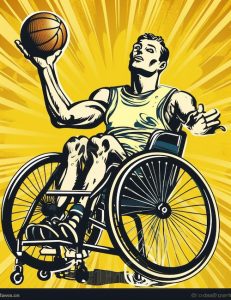AN INTRODUCTION to the 30 ways to include disabled people (or with a disorder) into your life, group or organisation
In today’s increasingly diverse and interconnected world, incorporating methods of how to include disabled people is vital. Ensuring everyone feels seen, heard, and valued in our personal lives, group engagements, or organizational structures is paramount. Individuals with disabilities or disorders have just as much to offer, teach, and share as anyone else, yet they often face barriers to inclusion that many of us might not even realize exist.
From unintentional biases to infrastructural hurdles, there are many challenges. However, the good news is that we all have the power to make a positive difference. We can cultivate environments where everyone thrives by adapting our approaches, attitudes, and actions.
This blog will explore 30 practical ways to seamlessly and genuinely integrate individuals with disabilities or disorders into your life, group, or organization.
The 30 ways
- Educate Yourself: Take time to learn about their disability or disorder, which fosters understanding and empathy.
- Establish Trust: Let them know they can rely on you.
- Be Patient: Understand they might need more time or a different approach.
- Ask About Preferences: Everyone’s needs are different. Ask them how they’d prefer things to be done.
- Invite Them: Ensure they are included in social gatherings, outings, and events.
- Offer Assistance: Without being presumptuous, kindly ask if they need help.
- Provide Opportunities: Offer chances for them to showcase their talents or skills.
- Seek Their Expertise: Everyone has strengths. Recognize and seek their advice or skills in specific areas.
- Respect Boundaries: Understand and acknowledge their limits.

- Use Inclusive Language: Words matter. Use terminology that respects their identity.
- Adapt Activities: Modify games or events so everyone can participate.
- Listen Actively: Pay close attention when they share their experiences.
- Offer Transportation: Sometimes, getting to places might be challenging.
- Seek Feedback: Ask if they feel included and comfortable.
- Challenge Stereotypes: Address and correct misconceptions when you encounter them.
- Encourage Hobbies: Find shared activities or hobbies.
- Incorporate Universal Design: When planning spaces or events, consider designs that cater to everyone, regardless of ability.
- Promote Awareness: Raise awareness about disabilities or disorders in your community.
- Use Technology: Utilize apps or devices that promote inclusivity.
- Educate Others: Share your knowledge with friends and family.
- Offer Flexibility: Adjust schedules or plans based on their needs.
- Visit Accessible Places: Ensure locations are disability-friendly.
- Adopt Inclusive Communication: Learn sign language, braille, or other communication tools if it helps bridge the gap.
- Support Their Advocacy: Stand by them in their efforts to raise awareness.
- Collaborate on Projects: Work together on initiatives, fostering skills and bonding.
- Celebrate Achievements: Recognize their successes and milestones.
- Engage in Sports: Participate in adaptive sports or exercises.
- Encourage Open Dialogue: Allow them to express any concerns.
- Ask About Comfort: Regularly check if they’re comfortable in different settings.
- Create Safe Spaces: Make sure they have a space to speak and be heard, whether it’s in group discussions or one-on-one interactions.
THE CONCLUSION to the 30 ways to include disabled people (or with a disorder) into your life, group or organisation
Inclusion is more than just a gesture; it’s a commitment to understanding, empathy, and shared growth. By integrating the 30 strategies we’ve discussed, not only do we uplift individuals with disabilities or disorders, but we also enrich our own lives, groups, and organizations.
Every step we take towards inclusivity paints a broader, more vibrant picture of community, where every member’s uniqueness is celebrated and their potential limitless. Let’s continue this journey with open hearts and minds, ensuring everyone feels valued, understood, and integral to our shared story.
Click here for the Wikipedia article about Inclusion.
Click here for additional information about this site.



